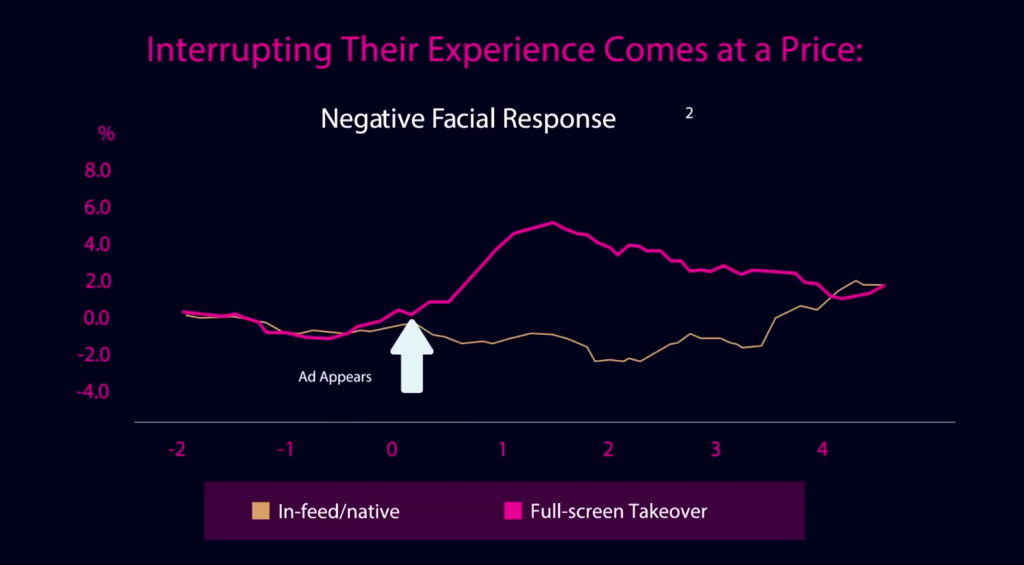What is Net Attention?
It is the amount of attention a human has and where they spend it. In our Forces of Change research, we undertook an extensive three-part study that looked at mobile behavior and how people were using apps. Here’s what we found.
People spend 5 hours every day across all mobile apps and people interact with them 88 times per day.
What are consumers doing on their phones?
Social takes it all. 105 interactions per day are spent on social media compared to only 10 interactions related to news and travel. Our friends over at Google have similar findings when it comes to mobile content consumption. In the U.S., for example, 59% of smartphone users are engaging with social networks, 45% are consuming videos, 35% are purchasing products and 17% are playing games.1
More surprising than what people were doing, was the physiological intensity with which they did it. Mobile users’ biometric intensity measured 2x higher than television viewers. As brands, we have an unprecedented opportunity to interact and engage with audiences like never before on mobile.
So many apps. So much noise.
In 2017, there were over 175 billion mobile app downloads. With so many apps flooding the app stores, how do brands cut through the noise to get a slice of that Net Attention?
First, brands need to find in-app ad inventory in apps that align with their audience. Or they can take it even further and develop branded experiences in mobile apps. If done tastefully, your brand force will be multiplied. Done intrusively, and you’ll reach uncharted depths of negative perception and erosion of your brand equity.
Data from our neurological study, for example, shows the effect of full-screen takeovers. They were deemed to be more intrusive, invasive and interfering than in-feed ads, despite the fact that they also generated higher recall.

Forces of Change statistics from Net Attention
Immediately after seeing a full-screen takeover ad, the user’s negative facial response skyrockets before resuming its normal resting face, while in-feed or native ads remain fairly neutral throughout the experience.
The magic bullet for positive in-app brand experiences boils down to three factors: relevance, native placement and user control.
“One suggestion that I would have for clients is that they start becoming a little more format aware. Ask yourself … does it have application delivery? Does it have mobile device delivery broken out? Is your media agency, or your creative agency, format aware? Because that format awareness really matters.”
–Scott Hagedorn
What does it mean to be format aware?
Format awareness refers to the understanding of the content and aligning your brand story while placing the user—not the brand—as the hero. If brands can get the publishers involved in the content-creation process, results for brands can be dramatically improved.
There are three things we found were required to promote more positive consumer behavior when advertising in mobile:
- Give consumers control over their experience.
- Make sure ads match the look and feel of the content.
- Keep ads relevant to their interests.
Get these three elements right, and you’ll create positive connections and engagements with consumers in mobile screens that matter most.
To learn more about connecting with customers on their screens of Net Attention, see the full Forces of Change report on Net Persuasion.
